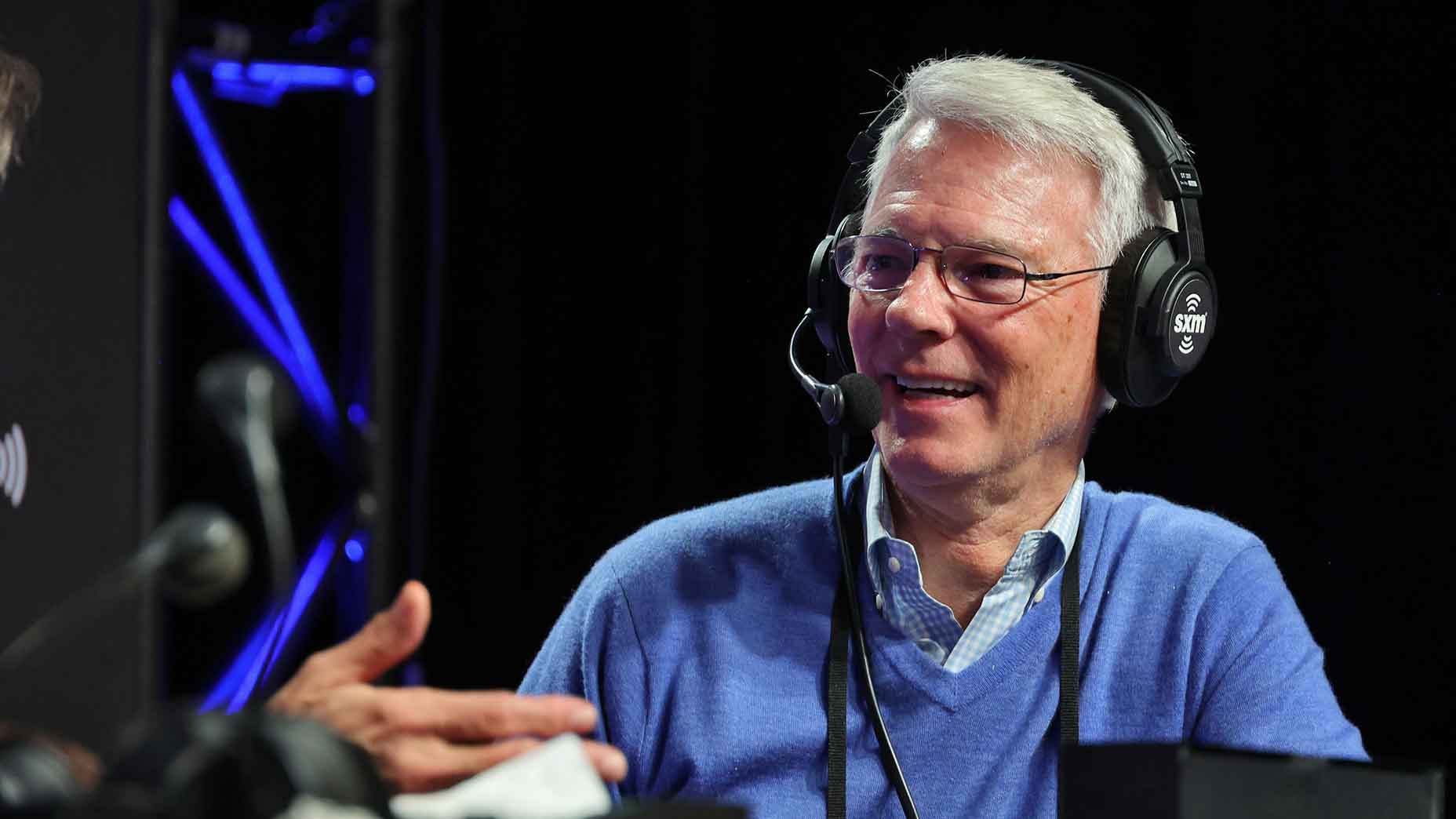Phil Mickelson proved he has a future career in broadcasting (if he wants it)

Phil Mickelson owned his time in the broadcast booth Saturday.
CBS Broadcast
Leave it to Phil Mickelson to take a tournament broadcast hostage while he’s out of contention, but that’s exactly what happened Saturday on CBS.
Mickelson joined the national broadcast for 90 electric minutes shortly after his third round Saturday, and despite the golf at TPC Harding Park being plenty entertaining on its own, what Mickelson brought to the booth was a breath of fresh air. A liveliness filled with information. If social media was any indication — and in this case it probably is — Mickelson’s performance was a hit. Once he really found his groove, it was perhaps his best work on the golf course this season.
Mickelson’s first move was to make a childish joke — make your own inferences — that Faldo dove head-first into.
“There’s three things I do well: play golf and talk golf,” Mickelson said.
“What’s the third thing?,” Nick Faldo asked.
“He set you up,” Jim Nantz said, clearing the air as Mickelson smirked.
Phil being Phil, right? The commentary didn’t improve immediately either. When prompted with Haotong Li’s first tee shot, Mickelson offered: “That’s a really nice start.” And next when Nantz teed him up to talk about his cut-making birdie Friday evening: “Yeah, that one felt good.”
This didn’t feel like Phil, the man who seems to adore microphones in his face. Soon, thankfully, he seemed to get comfortable.
Coming back from the first commercial break, Mickelson finally dove into the goods, citing that Bryson was probably the only player who could clear the bunker on 11 and stay near the hole on his approach. Next he clarified why Collin Morikawa needed to be right of the pin on his approach to the 12th, and how he definitely knew it before the shot. “The subtleties of the breaks and how to play each hole with each pin is great knowledge,” Mickelson said.
Off the second commercial break, Nantz opened it up to the group to discuss Tommy Fleetwood’s next approach. Mickelson jumped in first, and did so repeatedly for the next 80 minutes. Phil offered what he likes about Li’s swing — his left arm and club make a straight line. He opined to Dottie Pepper how easy it is to get too close to the 4th green off the tee. He added that Li’s caddie also works at Michael Jordan’s new club, Grove 23. And that he remembers watching Scottie Scheffler compete in the U.S. Junior Amateur seven years ago. And why the 6th fairway is intricately difficult to hit, just moments before Brooks Koepka‘s too-bold line clipped a cypress branch.
It is obviously great theater hearing the thoughts of a Hall-of-Fame golfer who just played the course in competition, especially this Hall-of-Famer. Get Mickelson going about fasting and he’ll talk your ear off. But his musings were useful — simple enough for the casual fan and relevant as ever for the golf nerd thirsting over Harding Park. Like how Li likely left putts short because late in the day, the greens begin to shine and seem faster than they truly are.
Lefty’s hour-and-a-half of random insights was so informative, it would no doubt prove valuable for Harding Park prep — 2029 Presidents Cup players and caddies take note. It was a much better example of how Rickie Fowler’s mundane language during his mic’d-up round was still very entertaining golf television. Mic’d up golf is more informed golf, and it’s a better golf broadcast every single time.
Like any first-timer, of course, Phil was far from perfect. While most of this may have been Faldo’s fault, the joking nature between the two often felt awkward and forced. At one point, Mickelson even said, “You’re not following my jokes, and I’m not following yours.” Only Nantz knows how chummy it really was. When Faldo assumed that DeChambeau likely measured the barometric pressure Saturday, Phil pressed him immediately with, “What was it?” Faldo, unsurprisingly, did not know. No one knew. No one but Phil. “29.92,” he said. It felt like a joke, but that’s actually what the pressure was Saturday in San Francisco.
Mickelson’s most glaring weakness was his refusal to critique other players: a key facet of the color commentator role. According to Mickelson, Fleetwood is a good putter. Li is also a great putter. And an underrated ball-striker. Dustin Johnson has become “so good” at 4-foot putts. Xander Schauffele is also very good at putting. And lastly, despite not knowing Joel Dahmen, Mickelson hears that he’s one of the nicest players on Tour.
We can endorse the last sentiment and casually confirm the others. Mickelson wasn’t wrong with any of them, but was he providing anything by speaking? Nope, just filler audio.
Heavy weighs the crown of the color commentator. The role often requires strong relationships with Tour players, but also the pointed ability to analyze their decisions. Johnny Miller had no issue with it at NBC, but he’s been retired for 18 months. Only Paul Azinger has shown an ability to consistently fill the void. Davis Love III was promised to be great as an on-course reporter, but he’s already taken leave to spend more time with family.
Therein lies a knotty aspect of the job. It’s a lot of work. It’s a lot of time spent watching golf from afar and figuring out what it means. At dozens of stops across the world each year. It seems improbable Mickelson would be interested in that job. He wasn’t auditioning, after all. At least not when he started.












